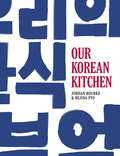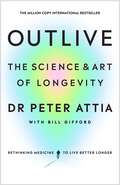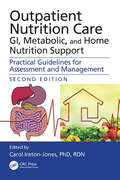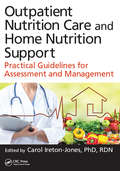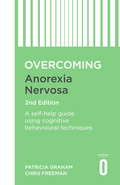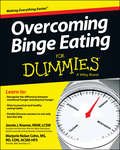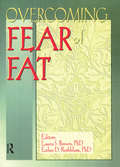- Table View
- List View
Ottolenghi SIMPLE
by Yotam OttolenghiEverything you love about Ottolenghi, made simple. Yotam Ottolenghi’s award-winning recipes are always a celebration: an unforgettable combination of abundance, taste and surprise. Ottolenghi SIMPLE is no different, with 130 brand-new dishes that contain all the inventive elements and flavour combinations that Ottolenghi is loved for, but with minimal hassle for maximum joy. Bursting with colourful photography, Ottolenghi SIMPLE showcases Yotam’s standout dishes that will suit whatever type of cooking you find easy – whether that’s getting wonderful food on the table in under 30 minutes, using just one pot to make a delicious meal, or a flavoursome dish that can be prepared ahead and then served when you’re ready. These brilliant, flavour-forward dishes are all SIMPLE in at least one (but very often more than one) way: S – short on time: less than 30 minutes I – 10 ingredients or lessM – make aheadP – pantry L – lazyE – easier than you thinkOttolenghi SIMPLE is the stunning new cookbook we have all been wishing for: Yotam Ottolenghi’s vibrant food made easy.
Ottolenghi Test Kitchen: Extra Good Things
by Yotam Ottolenghi Noor Murad Ottolenghi Test KitchenOttolenghify every meal.Flexible, flavour-packed dishes that all lend a little something 'extra' to your next meal.It's harissa butter on a roasted mushroom, then tossed with steamed veg or stuffed into a baked potato. It's tamarind dressing on turmeric fried eggs, then drizzled over a steak the next day. Rounded off with a chapter on the 'one basics' of desserts for you to perfect and then adapt with your favourite flavour combinations, such as a basic mousse transformed into coffee mousse with tahini fudge.This is cooking it forward, Ottolenghi style, filling your cupboards with adaptable homemade ingredients to add some oomph to every mealtime.Praise for Ottolenghi Test Kitchen Shelf Love:'I absolutely love this book!' - Nigella Lawson'You could cook out of this for years and never eat a dull meal.' - Diana Henry, Telegraph'In this guide to making the most of what you have, it's inspiration that shines, rather than fancy ingredients.' - Observer Books of the Year
Ottolenghi Test Kitchen: Shelf Love
by Yotam Ottolenghi Noor Murad Ottolenghi Test KitchenRelaxed, flexible home cooking from Yotam Ottolenghi and his superteam.Whether they're conjuring up new recipes or cooking for themselves at home, the Ottolenghi Test Kitchen team do what we all do: they raid their kitchens. But then, they turn whatever they find into approachable creations with an 'Ottolenghi' twist.This instinct is in perfect sync with recent times, when we've all been standing in front of our kitchen shelves, our cupboards and our fridges, wondering what to cook with what we've got; how to put a can of chickpeas or a bag of frozen peas to good use, instead of taking an extra trip to the shops.For the first time, the team welcome us into their creative space. These dishes pack all the punch and edge we expect from Ottolenghi, but offer more flexibility to make them our own, using what we've got to hand. There's the ultimate guide to creamy dreamy hummus, a one-pan route to confit tandoori chickpeas and a tomato salad that rules them all.This book is all about feeding ourselves and our families with less stress and less fuss, but with all the 'wow' of an Ottolenghi meal. It's a notebook to scribble on and add to, to take its ethos and absolutely make it your own.This is how to cook, the OTK way.
Our Changing Menu: Climate Change and the Foods We Love and Need
by Michael P. Hoffmann Carrie Koplinka-Loehr Danielle L. EisemanOur Changing Menu unpacks the increasingly complex relationships between food and climate change. Whether you're a chef, baker, distiller, restaurateur, or someone who simply enjoys a good pizza or drink, it's time to come to terms with how climate change is affecting our diverse and interwoven food system. Michael P. Hoffmann, Carrie Koplinka-Loehr, and Danielle L. Eiseman offer an eye-opening journey through a complete menu of before-dinner drinks and salads; main courses and sides; and coffee and dessert. Along the way they examine the escalating changes occurring to the flavors of spices and teas, the yields of wheat, the vitamins in rice, and the price of vanilla. Their story is rounded out with a primer on the global food system, the causes and impacts of climate change, and what we can all do. Our Changing Menu is a celebration of food and a call to action—encouraging readers to join with others from the common ground of food to help tackle the greatest challenge of our time.
Our Fermented Lives: A History of How Fermented Foods Have Shaped Cultures & Communities
by Julia SkinnerFrom craft beers and sourdough bread to kimchi, coffee, tea, and cheese, fermentation is a popular topic in both food and health circles. In Our Fermented Lives, food historian and fermenting expert Julia Skinner explores the fascinating roots of a wide range of fermented foods in cultures around the world, with a focus on the many intersections fermented foods have with human history and culture, from the evolution of the microbiome to food preservation techniques, distinctive flavor profiles around the globe, and the building of community. Fans of fermentation, chefs, and anyone fascinated with the origins of various foods will enjoy this engaging popular history, which is accompanied by 42 recipes adapted from historic sources, including sauerkraut, corn beer, uji (fermented grain porridge), pickles and relishes, vinegars, ketchup, soy sauce, Tepache (fermented pineapple drink), vinegars, beet kvass, and more.
Our Grannies Recipes: Favourite Irish Dishes
by Eoin Purcell*Paperback edition of a bestselling title*Features recipes from the four corners of Ireland submitted mainly via ourgranniesrecipes.com*Of interest to both the tourist and nostalgia markets
Our Korean Kitchen
by Jordan Bourke Rejina PyoWINNER OF OBSERVER FOOD MONTHLY'S BEST NEW COOKBOOK AWARD 2016, AND FORTNUM AND MASON'S BEST COOKERY BOOK AWARD 2016OUR KOREAN KITCHEN is a celebration of the food, culture and flavours of Korea, a cuisine that is fast becoming the biggest trend in the culinary world. Capturing this movement, it introduces us to Korean food through a collection of classic and well-loved dishes. Beautifully illustrated throughout, the book will explore the secrets of authentic Korean food. Covering an extensive range of over 100 dishes, from Korean staples such as bibimbap and kimchi to stir-fried spicy squid, sesame & soy-marinated beef and pecan & cinnamon-stuffed pancakes, catering for beginners as well as those with a little more experience of cooking K-Food.Critically acclaimed chef and food writer Jordan and his Korean wife Rejina, provide a cultural history of the food of Korea giving context to the recipes that follow. Through the discussion of Korean culture, dining etiquette, key ingredients and the role of multiple side dishes, readers will be able to prepare and indulge in all aspects of Korean cuisine. There is also an easy to navigate Korean ingredients glossary, as well as menu ideas and information on the Korean meal. Chapters include: Rice and savoury porridgeVegetables, pickles & sidesSoups & stewsPancakes, fritters and tofuNoodlesMeatFishDesserts
Outbreak: Foodborne Illness and the Struggle for Food Safety
by Timothy D. LyttonFoodborne illness is a big problem. Wash those chicken breasts, and you’re likely to spread Salmonella to your countertops, kitchen towels, and other foods nearby. Even salad greens can become biohazards when toxic strains of E. coli inhabit the water used to irrigate crops. All told, contaminated food causes 48 million illnesses, 128,000 hospitalizations, and 3,000 deaths each year in the United States. With Outbreak, Timothy D. Lytton provides an up-to-date history and analysis of the US food safety system. He pays particular attention to important but frequently overlooked elements of the system, including private audits and liability insurance. Lytton chronicles efforts dating back to the 1800s to combat widespread contamination by pathogens such as E. coli and salmonella that have become frighteningly familiar to consumers. Over time, deadly foodborne illness outbreaks caused by infected milk, poison hamburgers, and tainted spinach have spurred steady scientific and technological advances in food safety. Nevertheless, problems persist. Inadequate agency budgets restrict the reach of government regulation. Pressure from consumers to keep prices down constrains industry investments in safety. The limits of scientific knowledge leave experts unable to assess policies’ effectiveness and whether measures designed to reduce contamination have actually improved public health. Outbreak offers practical reforms that will strengthen the food safety system’s capacity to learn from its mistakes and identify cost-effective food safety efforts capable of producing measurable public health benefits.
Outbreak: Foodborne Illness and the Struggle for Food Safety
by Timothy D. LyttonFoodborne illness is a big problem. Wash those chicken breasts, and you’re likely to spread Salmonella to your countertops, kitchen towels, and other foods nearby. Even salad greens can become biohazards when toxic strains of E. coli inhabit the water used to irrigate crops. All told, contaminated food causes 48 million illnesses, 128,000 hospitalizations, and 3,000 deaths each year in the United States. With Outbreak, Timothy D. Lytton provides an up-to-date history and analysis of the US food safety system. He pays particular attention to important but frequently overlooked elements of the system, including private audits and liability insurance. Lytton chronicles efforts dating back to the 1800s to combat widespread contamination by pathogens such as E. coli and salmonella that have become frighteningly familiar to consumers. Over time, deadly foodborne illness outbreaks caused by infected milk, poison hamburgers, and tainted spinach have spurred steady scientific and technological advances in food safety. Nevertheless, problems persist. Inadequate agency budgets restrict the reach of government regulation. Pressure from consumers to keep prices down constrains industry investments in safety. The limits of scientific knowledge leave experts unable to assess policies’ effectiveness and whether measures designed to reduce contamination have actually improved public health. Outbreak offers practical reforms that will strengthen the food safety system’s capacity to learn from its mistakes and identify cost-effective food safety efforts capable of producing measurable public health benefits.
Outbreak: Foodborne Illness and the Struggle for Food Safety
by Timothy D. LyttonFoodborne illness is a big problem. Wash those chicken breasts, and you’re likely to spread Salmonella to your countertops, kitchen towels, and other foods nearby. Even salad greens can become biohazards when toxic strains of E. coli inhabit the water used to irrigate crops. All told, contaminated food causes 48 million illnesses, 128,000 hospitalizations, and 3,000 deaths each year in the United States. With Outbreak, Timothy D. Lytton provides an up-to-date history and analysis of the US food safety system. He pays particular attention to important but frequently overlooked elements of the system, including private audits and liability insurance. Lytton chronicles efforts dating back to the 1800s to combat widespread contamination by pathogens such as E. coli and salmonella that have become frighteningly familiar to consumers. Over time, deadly foodborne illness outbreaks caused by infected milk, poison hamburgers, and tainted spinach have spurred steady scientific and technological advances in food safety. Nevertheless, problems persist. Inadequate agency budgets restrict the reach of government regulation. Pressure from consumers to keep prices down constrains industry investments in safety. The limits of scientific knowledge leave experts unable to assess policies’ effectiveness and whether measures designed to reduce contamination have actually improved public health. Outbreak offers practical reforms that will strengthen the food safety system’s capacity to learn from its mistakes and identify cost-effective food safety efforts capable of producing measurable public health benefits.
Outbreak: Foodborne Illness and the Struggle for Food Safety
by Timothy D. LyttonFoodborne illness is a big problem. Wash those chicken breasts, and you’re likely to spread Salmonella to your countertops, kitchen towels, and other foods nearby. Even salad greens can become biohazards when toxic strains of E. coli inhabit the water used to irrigate crops. All told, contaminated food causes 48 million illnesses, 128,000 hospitalizations, and 3,000 deaths each year in the United States. With Outbreak, Timothy D. Lytton provides an up-to-date history and analysis of the US food safety system. He pays particular attention to important but frequently overlooked elements of the system, including private audits and liability insurance. Lytton chronicles efforts dating back to the 1800s to combat widespread contamination by pathogens such as E. coli and salmonella that have become frighteningly familiar to consumers. Over time, deadly foodborne illness outbreaks caused by infected milk, poison hamburgers, and tainted spinach have spurred steady scientific and technological advances in food safety. Nevertheless, problems persist. Inadequate agency budgets restrict the reach of government regulation. Pressure from consumers to keep prices down constrains industry investments in safety. The limits of scientific knowledge leave experts unable to assess policies’ effectiveness and whether measures designed to reduce contamination have actually improved public health. Outbreak offers practical reforms that will strengthen the food safety system’s capacity to learn from its mistakes and identify cost-effective food safety efforts capable of producing measurable public health benefits.
Outbreak: Foodborne Illness and the Struggle for Food Safety
by Timothy D. LyttonFoodborne illness is a big problem. Wash those chicken breasts, and you’re likely to spread Salmonella to your countertops, kitchen towels, and other foods nearby. Even salad greens can become biohazards when toxic strains of E. coli inhabit the water used to irrigate crops. All told, contaminated food causes 48 million illnesses, 128,000 hospitalizations, and 3,000 deaths each year in the United States. With Outbreak, Timothy D. Lytton provides an up-to-date history and analysis of the US food safety system. He pays particular attention to important but frequently overlooked elements of the system, including private audits and liability insurance. Lytton chronicles efforts dating back to the 1800s to combat widespread contamination by pathogens such as E. coli and salmonella that have become frighteningly familiar to consumers. Over time, deadly foodborne illness outbreaks caused by infected milk, poison hamburgers, and tainted spinach have spurred steady scientific and technological advances in food safety. Nevertheless, problems persist. Inadequate agency budgets restrict the reach of government regulation. Pressure from consumers to keep prices down constrains industry investments in safety. The limits of scientific knowledge leave experts unable to assess policies’ effectiveness and whether measures designed to reduce contamination have actually improved public health. Outbreak offers practical reforms that will strengthen the food safety system’s capacity to learn from its mistakes and identify cost-effective food safety efforts capable of producing measurable public health benefits.
Outbreak: Foodborne Illness and the Struggle for Food Safety
by Timothy D. LyttonFoodborne illness is a big problem. Wash those chicken breasts, and you’re likely to spread Salmonella to your countertops, kitchen towels, and other foods nearby. Even salad greens can become biohazards when toxic strains of E. coli inhabit the water used to irrigate crops. All told, contaminated food causes 48 million illnesses, 128,000 hospitalizations, and 3,000 deaths each year in the United States. With Outbreak, Timothy D. Lytton provides an up-to-date history and analysis of the US food safety system. He pays particular attention to important but frequently overlooked elements of the system, including private audits and liability insurance. Lytton chronicles efforts dating back to the 1800s to combat widespread contamination by pathogens such as E. coli and salmonella that have become frighteningly familiar to consumers. Over time, deadly foodborne illness outbreaks caused by infected milk, poison hamburgers, and tainted spinach have spurred steady scientific and technological advances in food safety. Nevertheless, problems persist. Inadequate agency budgets restrict the reach of government regulation. Pressure from consumers to keep prices down constrains industry investments in safety. The limits of scientific knowledge leave experts unable to assess policies’ effectiveness and whether measures designed to reduce contamination have actually improved public health. Outbreak offers practical reforms that will strengthen the food safety system’s capacity to learn from its mistakes and identify cost-effective food safety efforts capable of producing measurable public health benefits.
Outdoor Cooking: River Cottage Handbook No.17
by Gill MellerIn Outdoor Cooking, Gill Meller explains every aspect of cooking out in the open. He will take you back to basics with a guide to building the perfect fire, and reinvigorate your summer barbecue by cooking bread on it, grilling Indian-style kebabs, smoking fish or roasting succulent joints of meat. You can also find out how to make the most of a pizza oven or Kamado-style clay barbecue (popularised by the Big Green Egg) and, if you're feeling adventurous, there are comprehensive instructions for spit roasting larger pieces of meat or making a smouldering earth oven. With an introduction by Hugh Fearnley-Whittingstall and plenty of mouth-watering photographs, this book will rekindle your passion for the great outdoors and spark new ideas for creative cooking in the wild.
Outdoor Ovens: If you can't stand the heat, go al fresco
by Josh SuttonTandoors, communal bakehouses, Cob ovens, Hay boxes, Hangi underground ovens from the Pacific, and of course, Barbeques. Josh Sutton has researched the ways humankind has enjoyed cooking in the great outdoors. By focusing on outdoor ovens, meaning those constructed or used outside of the home, as opposed to the average temperamental contraption found in most modern kitchens, we can learn about the people and communities that built and operated them. We know that people naturally gravitate towards a fire, and with a few recipes as well as instructions on how to build ovens, readers will warm to this book. If you can’t stand the heat, go al fresco!
Outlive: The Science and Art of Longevity
by Peter Attia Bill Gifford- THE INSTANT SUNDAY TIMES AND NEW YORK TIMES BESTSELLER, AND OVER 1 MILLION COPIES SOLD GLOBALLY -This is the ultimate manual for living better and longer.For all its successes, mainstream medicine has failed to make much progress against the diseases of ageing that kill most people: heart disease, cancer, Alzheimer's disease, and type 2 diabetes. Too often, it intervenes with treatments too late, prolonging lifespan at the expense of quality of life. Dr Peter Attia, the world's top longevity expert who is featured on Chris Hemsworth's National Geographic documentary LIMITLESS, believes we must replace this outdated framework with a personalised, proactive strategy for longevity.This isn't 'biohacking,' it's science: a well-founded strategic approach to extending lifespan while improving our physical, cognitive and emotional health, making each decade better than the one before. With Outlive's practical advice and roadmap, you can plot a different path for your life, one that lets you outlive your genes to make each decade better than the one before.In the Daily Mail's 'TOP READS OF 2023: Books that will help you feel better for longer''One of the most important books you'll ever read.' - Steven D. Levitt, New York Times bestselling author of Freakonomics'Highlighters at the ready. This is jam packed with things you will wish you had known before. I devoured the audiobook and instantly bought a hard copy to keep on my desk' - Dr Julie Smith, bestselling author of Why Has Nobody Told Me This Before
Outpatient Nutrition Care: Practical Guidelines for Assessment and Management
by Carol Ireton-JonesAs the number of patients receiving home care nutrition support increases, proper assessment and management of this therapy is crucial, and clinicians need to practice at an advanced level. This second edition provides practical nutrition care information for professionals working with individuals outside of the hospital including registered dietitians, nurses, pharmacists, and physicians. It covers screening, assessing, and treating malnutrition; outpatient nutrition care in diabetes, cardiovascular disease, gastrointestinal disease, and home enteral and parenteral nutrition. Each chapter describes the disease process as well as the management of the disease or therapy. Key Features Presents practical information on proper nutrition care of individuals in the outpatient setting and those receiving home nutrition support New information on GI tests and procedures; gastroparesis/pancreatitis, parenteral lipids, and bariatric surgery Expanded chapter on short bowel syndrome and malabsorptive disorders Additional information on feeding options including an overview of oral, oral supplements, and enteral and parenteral nutrition Teaches the user additional information on disease processes as well as the management of the disease or therapy
Outpatient Nutrition Care: Practical Guidelines for Assessment and Management
by Carol Ireton-Jones Berkeley LimketkaiAs the number of patients receiving home care nutrition support increases, proper assessment and management of this therapy is crucial, and clinicians need to practice at an advanced level. This second edition provides practical nutrition care information for professionals working with individuals outside of the hospital including registered dietitians, nurses, pharmacists, and physicians. It covers screening, assessing, and treating malnutrition; outpatient nutrition care in diabetes, cardiovascular disease, gastrointestinal disease, and home enteral and parenteral nutrition. Each chapter describes the disease process as well as the management of the disease or therapy. Key Features Presents practical information on proper nutrition care of individuals in the outpatient setting and those receiving home nutrition support New information on GI tests and procedures; gastroparesis/pancreatitis, parenteral lipids, and bariatric surgery Expanded chapter on short bowel syndrome and malabsorptive disorders Additional information on feeding options including an overview of oral, oral supplements, and enteral and parenteral nutrition Teaches the user additional information on disease processes as well as the management of the disease or therapy
Outpatient Nutrition Care and Home Nutrition Support: Practical Guidelines for Assessment and Management
by Carol Ireton-JonesNutrition, defined by Merriam-Webster, is the process of eating the right kind of food so you can grow properly and be healthy. However, making the right food and nutrition choices and finding the best and most accurate nutrition information can be a challenge, especially when a disease or injury is present. There are a wide range of ways that nutrition can be healing, from a simple broth that provides fluids and electrolytes to therapeutic nutrition for diabetes, irritable bowel syndrome, or osteoporosis. Registered Dietitian Nutritionists (RDN) have expertise in disease management and translation of nutrition requirements to foods to consume. However, nutrition care often does not receive the attention in the out-patient setting that is needed to achieve nutrition goals. The purpose of this book is to provide pertinent and concise nutrition care information for Registered Dietitian Nutritionists and other professionals working with individuals outside of the hospital including nurses, pharmacists, and physicians. This book covers screening, assessing, and treating malnutrition; out-patient nutrition care in diabetes, cardiovascular disease, gastrointestinal disease, osteoporosis; and home enteral and parenteral nutrition. In each chapter the reader will learn more about the disease process as well as the management of the disease or therapy. As the number of patients receiving home care nutrition support increases, proper assessment and management of this therapy is crucial, and clinicians need to practice at an advanced level. This book presents advanced and readily applicable information on proper nutrition care of individuals in the outpatient setting and those receiving home nutrition support.
Outpatient Nutrition Care and Home Nutrition Support: Practical Guidelines for Assessment and Management
by Carol Ireton-JonesNutrition, defined by Merriam-Webster, is the process of eating the right kind of food so you can grow properly and be healthy. However, making the right food and nutrition choices and finding the best and most accurate nutrition information can be a challenge, especially when a disease or injury is present. There are a wide range of ways that nutrition can be healing, from a simple broth that provides fluids and electrolytes to therapeutic nutrition for diabetes, irritable bowel syndrome, or osteoporosis. Registered Dietitian Nutritionists (RDN) have expertise in disease management and translation of nutrition requirements to foods to consume. However, nutrition care often does not receive the attention in the out-patient setting that is needed to achieve nutrition goals. The purpose of this book is to provide pertinent and concise nutrition care information for Registered Dietitian Nutritionists and other professionals working with individuals outside of the hospital including nurses, pharmacists, and physicians. This book covers screening, assessing, and treating malnutrition; out-patient nutrition care in diabetes, cardiovascular disease, gastrointestinal disease, osteoporosis; and home enteral and parenteral nutrition. In each chapter the reader will learn more about the disease process as well as the management of the disease or therapy. As the number of patients receiving home care nutrition support increases, proper assessment and management of this therapy is crucial, and clinicians need to practice at an advanced level. This book presents advanced and readily applicable information on proper nutrition care of individuals in the outpatient setting and those receiving home nutrition support.
Over a Red Hot Stove: Essays in early cooking technology (Food And Society Ser. #14)
by Ivan DayThe fourteenth volume of the Leeds Symposium on Food History 'Food and Society' series •The theme is the ways we cooked our food since medieval times.David Eveleigh discusses the rise of the kitchen range, from the 19th-century coal-fired monsters to the electric and gas cookers of the early 20th century.Ivan Day, in two essays, talks about techniques of roasting. In the first he tells of the ox roast; in the second he traces the history of the clockwork spit. Peter Brears gives an account of roasting, specifically the 'baron of beef', in early modern royal palaces.
Overcoming Anorexia Nervosa 2nd Edition: A self-help guide using cognitive behavioural techniques (Overcoming Books)
by Patricia Graham Dr Christopher FreemanBreak free from the vicious cycle of anorexia nervosaAnorexia nervosa affects both men and women, of all age groups and social classes, internationally. For both the sufferer and the friends and family who care for them, the impact of the illness can be devastating. However, it can be treated effectively using cognitive behavioural therapy (CBT).This self-help book provides support to battle this notorious and widespread eating disorder and has been used effectively with many patients in clinical settings. Using CBT techniques, you will learn to:Understand the many forms and causes of anorexia nervosaChallenge negative thinking and behaviourImprove your body imageDevelop coping strategies for the futureThese clinically proven tools form a complete recovery programme, with practical exercises and worksheets.Overcoming self-help guides use clinically proven techniques to treat long-standing and disabling conditions, both psychological and physical. Many guides in the Overcoming series are recommended under the Reading Well scheme.Series Editor: Professor Peter Cooper
Overcoming Binge Eating For Dummies
by Jennie Kramer Marjorie Nolan CohnControl binge eating and get on the path to recovery Overcoming Binge Eating for Dummies provides trusted information, resources, tools, and activities to help you and your loved ones understand your binge eating — and gain control over it. Written with compassion and authority, it uses stories and examples from the authors' work with clients they've helped to overcome this complicated disorder. In Overcoming Binge Eating For Dummies, you'll find information and insight on identifying the symptoms of binge eating disorder, overcoming eating as an addiction, ways to overcome the urge to binge, how to institute a healthy eating pattern, ways to deal with anxiety and emotional eating, and much more. Provides professional resources for seeking additional help for binge eating Includes advice on talking with loved ones about binge eating Offers tips and guidance to establish a safe and healthy recovery plan Overcoming Binge Eating For Dummies is for those currently suffering or recovering from BED, as well as families and friends looking for a comprehensive and expert resource to this widespread but largely misunderstood disorder.
Overcoming Binge Eating For Dummies
by Jennie Kramer Marjorie Nolan CohnControl binge eating and get on the path to recovery Overcoming Binge Eating for Dummies provides trusted information, resources, tools, and activities to help you and your loved ones understand your binge eating — and gain control over it. Written with compassion and authority, it uses stories and examples from the authors' work with clients they've helped to overcome this complicated disorder. In Overcoming Binge Eating For Dummies, you'll find information and insight on identifying the symptoms of binge eating disorder, overcoming eating as an addiction, ways to overcome the urge to binge, how to institute a healthy eating pattern, ways to deal with anxiety and emotional eating, and much more. Provides professional resources for seeking additional help for binge eating Includes advice on talking with loved ones about binge eating Offers tips and guidance to establish a safe and healthy recovery plan Overcoming Binge Eating For Dummies is for those currently suffering or recovering from BED, as well as families and friends looking for a comprehensive and expert resource to this widespread but largely misunderstood disorder.
Overcoming Fear of Fat
by Esther D Rothblum Laura BrownHere is an enlightening new volume that presents an integration of anti-fat-oppressive attitudes into the work of feminist therapy. Overcoming Fear of Fat is unique among professional work in the area of women and fat in that it does not approach size as the problem; rather it approaches prejudice against fat as the problem. Although for nearly a decade, fat activists have been raising the issues that are confronted in this book, therapists, including feminist therapists, have been colluding with their clients in pathologizing fat, celebrating weight loss, and failing to adequately challenge cultural stereotypes of attractiveness for women, instead of empowering clients and encouraging them to take on expert authority about their own experiences. The contributors, including therapists and fat activists, aim to disconnect the issues of food intake and eating disorders from those of weight. They share personal and professional experiences of challenging fat oppression, offer strategies for therapists to rid themselves and their clients of fat oppressive attitudes, and most importantly, they confront long-held cultural myths that fat is unhealthy, and that fat women are physically unfit and are in hiding from their sexuality or personal power. A practical and informative resource for therapists, especially those who work with fat women or who themselves struggle with issues of feeling critical of their own body size, Overcoming Fear of Fat will also be a valuable guide for fat women who wish to feel supported in their struggle for self-worth and respect.






